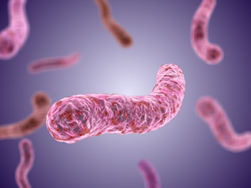Aerobic Bacteria
Aerobic Bacteria
It is an organism or aerobes that requires oxygen to survive and grow in the environment. There are 4 categories of aerobes.
- Obligate Aerobes – need oxygen to grow. In a process known as cellular respiration, these organisms use oxygen to oxidize substrates (for example sugars and fats) and generate energy
- Facultative Aerobes – use oxygen if it is available, but also have anaerobic methods of energy production.
- Microaerophilic –require oxygen for energy production, but are harmed by atmospheric concentrations of oxygen (21% O2).
- Aerotolerant – do not use oxygen but are not harmed by it.

Gram-POSITIVE Aerobic Bacteria
Rods/Bacilli
- Arcanobacterium
- Bacillus
- Corynebacterium
- Erysipelothrix
- Gardnerella
- Lactobacillus
- Listeria
- Mycobacterium
- Nocardia
Cocci
- Staphylococcus
- Streptococcus
Gram-NEGATIVE Aerobic Bacteria
Rods/Bacilli
- Citrobacter
- Edwardsiella
- Enterobacter
- Escheria
- Hafnia
- Klebsiella
- Morganella
- Proteus
- Providencia
- Salmonella
- Serratia
- Shigella
- Yersinia
- Aeromonas
- Pasteurella
- Plesiomonas
- Vibrio
- Acinetobacter
- Alcaligenes
- Burkholderia
- Flavobacterium
- Pseudomonas
- Stenotrophomonas
Cocci
- Moraxella
- Neisseria
Coccobacilli
- Bartonella
- Bordetella
- Brucella
- Campylobacter
- Eikenella
- Franciscella
- Haemophilus
- Helicobacter Kingella
List of Aerobe Bacteria
References :
- Balows A, DeHaan RM, Dowell VR, Guze LB (eds): Anaerobic Bacteria. Charles C Thomas, Springfield, IL, 1974 .
- Finegold SM: Anaerobic Bacteria in Human Disease. Academic Press, San Diego, 1977 .
- Finegold SM, George WL (eds): Anaerobic Infections in Humans. Academic Press, San Diego, 1989 .
- Holdeman LV, Cato EP, Moore WEC (eds): Anaerobe Laboratory Manual. 4th Ed. Virginia Polytechnic Institute and State University Anaerobe Laboratory, Blacksburg, VA, 1977 .
- Lennette EH, Spaulding EH, Truant JP (eds): Manual of Clinical Microbiology. 2nd Ed. American Society for Microbiology, Washington, D.C., 1974 .
- Morris JG. The physiology of obligate anaerobiosis. Adv Microb Physiol. 1975;12:169–246.
- Sutter VL, Citron DM, Edelstein MAC, Finegold SM: Wadsworth Anaerobic Bacteriology Manual, 4th Ed. Star Publishing, Belmont, CA, 1985 .
Hiroko E. Kikuchi and Takeshi Suzuki. (1986). Quantitative Method for Measurement of Aerotolerance of Bacteria and Its Application to Oral Indigenous Anaerobes. Applied And Environmental Microbiology, Oct. 1986, p. 971-973.
Dr Alvin Fox. (2016). Bacteriology – Chapter Three. Nutrition, Growth And Energy Metabolism.
Thomas Finn. (2014). Understanding bacterial adaptation to aerobic and anaerobic environments through experimental evolution and whole genome analysis.





